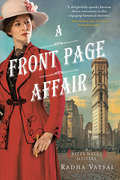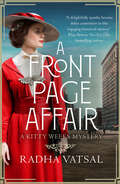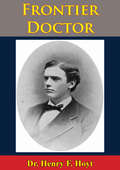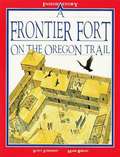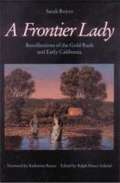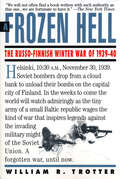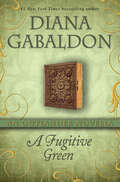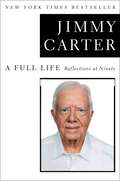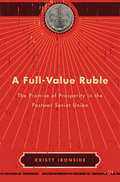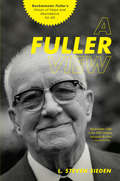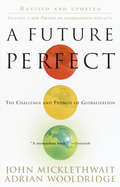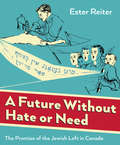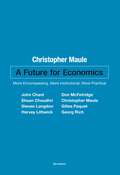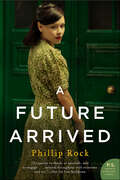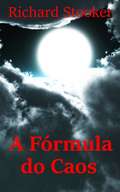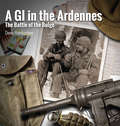- Table View
- List View
A Front Page Affair
by Radha VatsalNew York City, 1915The Lusitania has just been sunk, and headlines about a shooting at J.P. Morgan's mansion and the Great War are splashed across the front page of every newspaper. Capability "Kitty" Weeks would love nothing more than to report on the news of the day, but she's stuck writing about fashion and society gossip over on the Ladies' Page—until a man is murdered at a high society picnic on her beat.Determined to prove her worth as a journalist, Kitty finds herself plunged into the midst of a wartime conspiracy that threatens to derail the United States' attempt to remain neutral—and to disrupt the privileged life she has always known.Radha Vatsal's A Front Page Affair is the first book in highly anticipated series featuring rising journalism star Kitty Weeks.
A Front Page Affair: A Kitty Weeks Mystery (Kitty Weeks Mystery Ser. #0)
by Radha VatsalA female journalist in early–twentieth century NYC uncovers a conspiracy to draw the US into WWI in this historical mystery series debut. New York City, 1915. The Lusitania has just been sunk, and headlines about a shooting at J.P. Morgan&’s mansion and the Great War are splashed across the front page of every newspaper. Capability &“Kitty&” Weeks would love nothing more than to report on the news of the day, but she&’s stuck writing about fashion and society gossip over on the Ladies&’ Page—until a man is murdered at a high society picnic on her beat. Determined to prove her worth as a journalist, Kitty follows the trail wherever it leads. But she soon finds herself plunged into the midst of a wartime conspiracy that threatens to drag the US into the war overseas—and to disrupt the privileged life she has always known.
A Frontier Christmas
by Madeline Baker Connie Mason Norah Hess Robin HatcherA FRONTIER CHRISTMAS Four captivating Christmas love stories by today’s leading historical romance authors at their heartwarming, passionate best! LOVING SARAH Madeline Baker A CHRISTMAS ANGEL Robin Lee Hatcher THE HOMECOMING Norah Hess THE GREATEST GIFT OF ALL Connie Mason
A Frontier Doctor
by Henry F. HoytThis is the autobiography of the famous Henry F. Hoyt, a medical doctor and notable adventurer of the American West. His career started as a physician in the Goldrush town Deadwood, before moving west into the Texas Panhandle. He was by turns a Doctor, a Vigilante and a Cowboy, and he recounts stories of Charlie Siringo, John Chisum, Cole Younger, Billy The Kid, Jesse James, and many other figures of the Wild West. During the Spanish-American War he served as Chief Surgeon, was wounded and decorated in the Philippines, his life was one adventure after another. Illustrated with photographs.
A Frontier Fort on the Oregon Trail
by Scott SteedmanThis book describes life in a frontier fort on the Great Plains in mid-western America in the 19th century. The frontier forts were places of safety in a wild landscape - some were just military camps, but others grew into busy towns, crowded with trading posts and workshops. Indians, fur-trappers, gold miners and farmers brought goods to the fort to sell them. Pioneers, on their way to set up new homes in the west, rested and bought provisions within the shelter of the fort's high wooden walls.
A Frontier Lady: Recollections of the Gold Rush and Early California
by Katharine Royce Ralph Henry Gabriel Sarah RoyceSince it was first published in 1932, A Frontier Lady has held a high and special place in the literature of Americas westward migration. Written in the 1880s at the request of her son, the philosopher and educator Josiah Royce, Sarah Royce's narrative of the family odyssey across the continent and of their early years in California is also the portrait of a remarkable woman. In the words of her daughter-in-law, "Wherever she was, she made civilization, even when it seemed that she had little indeed from which to make it. "
A Frozen Hell: The Russo-Finnish Winter War Of 1939-1940
by William R. TrotterIn 1939, tiny Finland waged war-the kind of war that spawns legends-against the mighty Soviet Union, and yet their epic struggle has been largely ignored. Guerrillas on skis, heroic single-handed attacks on tanks, unfathomable endurance, and the charismatic leadership of one of this century's true military geniuses-these are the elements of both the Finnish victory and a gripping tale of war.
A Frozen Hell: The Russo-Finnish Winter War of 1939–1940
by William R. TrotterThe true story of the battle between Finland and Russia that erupted at the dawn of World War II. On a November morning in 1939, Soviet bombers began attacking Helsinki, Finland. In the weeks that followed, the tiny Baltic republic would wage a war—the kind of war that spawns legends—against the mighty Soviet Union, which was desperate for a buffer against Nazi Germany. With “a well-balanced blend of narrative and analysis,” historian William R. Trotter tells the story of guerrillas on skis; heroic, single-handed attacks on tanks; unfathomable endurance; and the charismatic leadership of one of the twentieth century’s true military geniuses (Library Journal). This little-known but dramatic battle would be decisive in Finland’s fight to maintain its independence—and A Frozen Hell brings it to fascinating life. Winner of the Finlandia Foundation Award for Arts and Letters “We will not often find a book written with such authority as this one.” —The New York Times Book Review
A Fugitive Green: An Outlander Novella (Outlander)
by Diana GabaldonThe #1 New York Times bestselling author of the acclaimed Outlander series weaves a captivating story of secrets and intrigue, bringing together Lord John&’s elder brother, Harold Grey, and his future wife, Minnie. This novella, originally published in Seven Stones to Stand or Fall, is now available as a standalone ebook. Minnie Rennie and her father operate a family business dealing in rare books and letters—with a sideline in forgery, blackmail, and burglary. After traveling from Paris to London for work, with a secret mission to find the mother she never knew, Minnie&’s clandestine meeting with a client pseudonymously named Mr. Bloomer is interrupted when she crosses paths by chance with Harold Grey, Earl of Melton (and the Duke of Pardloe, though he spurns the title). An outcast from society, Hal is beset by troubles. Not only is he grieving the deaths of his wife, Esmé, and their unborn child, he&’s still in shock over the revelations of her infidelity—an episode that ended with Hal killing her lover, Nathaniel Twelvetrees, in a duel. Minnie and Hal are immediately drawn to one another, but when Mr. Bloomer asks her to steal potentially incriminating letters between Esmé and Nathaniel that Hal still has in his possession, she finds herself swayed by fascination and empathy for a man she barely knows.
A Full Account of the Dreadful Explosion of Wallsend Colliery by which 101 Human Beings Perished!
by AnonymousAn account of a devastating mining disaster, celebrating the 175th anniversary of The London LibraryAlthough (shallow) coal mining dates back as far as the 13th century, it was the development of the steam engine which began a huge increase in the amount of coal raised from the ground. Mining was difficult and there was constant danger from collapse, flooding and the presence of explosive gas. This account of the devastating explosion on the afternoon of 18th June 1835 makes powerful reading, reflecting in its simple language and direct reporting the reality of working life in the collieries at the time. In all, 102 of the 105 men and boys in the pit at the time of the explosion lost their lives; the two youngest boys killed were 8 and 9 years old.The books in "Found on the Shelves" have been chosen to give a fascinating insight into the treasures that can be found while browsing in The London Library. Now celebrating its 175th anniversary, with over seventeen miles of shelving and more than a million books, The London Library has become an unrivalled archive of the modes, manners and thoughts of each generation which has helped to form it.From essays on dieting in the 1860s to instructions for gentlewomen on trout-fishing, from advice on the ill health caused by the "modern" craze of bicycling to travelogues from Norway, they are as readable and relevant today as they were more than a century ago.
A Full Life: Reflections at Ninety
by Jimmy Carter"A warm and detailed memoir." --Los Angeles Times Jimmy Carter, thirty-ninth President, Nobel Peace Prize winner, international humanitarian, fisherman, reflects on his full and happy life with pride, humor, and a few second thoughts.At ninety, Jimmy Carter reflects on his public and private life with a frankness that is disarming. He adds detail and emotion about his youth in rural Georgia that he described in his magnificent An Hour Before Daylight. He writes about racism and the isolation of the Carters. He describes the brutality of the hazing regimen at Annapolis, and how he nearly lost his life twice serving on submarines and his amazing interview with Admiral Rickover. He describes the profound influence his mother had on him, and how he admired his father even though he didn't emulate him. He admits that he decided to quit the Navy and later enter politics without consulting his wife, Rosalynn, and how appalled he is in retrospect. In A Full Life, Carter tells what he is proud of and what he might do differently. He discusses his regret at losing his re-election, but how he and Rosalynn pushed on and made a new life and second and third rewarding careers. He is frank about the presidents who have succeeded him, world leaders, and his passions for the causes he cares most about, particularly the condition of women and the deprived people of the developing world. This is a wise and moving look back from this remarkable man. Jimmy Carter has lived one of our great American lives--from rural obscurity to world fame, universal respect, and contentment. A Full Life is an extraordinary read.
A Full-Value Ruble: The Promise of Prosperity in the Postwar Soviet Union
by Kristy IronsideA new history shows that, despite Marxism’s rejection of money, the ruble was critical to the Soviet Union’s promise of shared prosperity for its citizens. In spite of Karl Marx’s proclamation that money would become obsolete under Communism, the ruble remained a key feature of Soviet life. In fact, although Western economists typically concluded that money ultimately played a limited role in the Soviet Union, Kristy Ironside argues that money was both more important and more powerful than most histories have recognized. After the Second World War, money was resurrected as an essential tool of Soviet governance. Certainly, its importance was not lost on Soviet leaders, despite official Communist Party dogma. Money, Ironside demonstrates, mediated the relationship between the Soviet state and its citizens and was at the center of both the government’s and the people’s visions for the maturing Communist project. A strong ruble—one that held real value in workers’ hands and served as an effective labor incentive—was seen as essential to the economic growth that would rebuild society and realize Communism’s promised future of abundance. Ironside shows how Soviet citizens turned to the state to remedy the damage that the ravages of the Second World War had inflicted upon their household economies. From the late 1940s through the early 1960s, progress toward Communism was increasingly measured by the health of its citizens’ personal finances, such as greater purchasing power, higher wages, better pensions, and growing savings. However, the increasing importance of money in Soviet life did not necessarily correlate to improved living standards for Soviet citizens. The Soviet government’s achievements in “raising the people’s material welfare” continued to lag behind the West’s advances during a period of unprecedented affluence. These factors combined to undermine popular support for Soviet power and confidence in the Communist project.
A Fuller View
by L. Steven SiedenKnown as a "Leonardo da Vinci of the twentieth century," engineer, designer, inventor, and futurist Dr. R. Buckminster "Bucky" Fuller had a keen awareness that we're all in this together. Understanding that humans don't have aclue about how to operate our fragile Spaceship Earth, Buckminster provided insightful design science solutions to our most challenging issues, including war, overpopulation, housing, increasing inflation, health care, the energy crisis, and much more. For all its genius, Fuller's legacy has yet to be fully discovered. Noted Fuller expert L. Steven Sieden together with Gary Zukav, John Robbins, Lynne Twist, Jean Houston, and many other notable individuals offer inspiring quotations and explanations that make Fuller's life more understandable and accessible. They preserve a voice that calls upon each of us to shift our intellectual and technological resources from creating weaponry to creating sustainability.Winner 2013 COVR award - Gold
A Funeral in Blue: Betrayal and murder from the dark streets of Victorian London (William Monk Mystery #12)
by Anne PerryTo solve the case, Monk must face the demons of his past... Monk comes up against a former adversary in Anne Perry's gripping murder mystery A Funeral in Blue. Perfect for fans of C. J. Sansom and Sarah Perry.'Funeral in Blue captures and retains the reader's undivided attention... The plot is intriguing on its own, but it becomes fascinating as Perry, with each new avenue of the investigation, seamlessly explores the nature of truth and the price at which it comes' - Virginian Pilot When her brother arrives on her doorstep, Hester Monk is shocked - as much by the unexpectedness of the visit as by the reason for it. For since her marriage to Monk, Charles and his elegant wife, Imogen, have kept their distance. But now Charles needs Hester's help. He believes Imogen is having an affair - there can be no other explanation for her recent strange behaviour. However, before Hester is able to investigate, a tragedy occurs. In a nearby artist's studio two women have been brutally killed. Having left the police force with extreme ill feeling between himself and his superior, the last thing Monk wants to do is face the demons of his past. But, in the course of his work, Monk is left with no choice but to visit his old adversary, Runcorn, and involve himself with the sensational murder case. What readers are saying about A Funeral in Blue: 'The mystery appears unsolvable and there is a dramatic denouement with the inclusion of an unlikely ally''A riveting mystery wrapped up in the dark and seedy side of Victorian London''Anne Perry is the best Victorian crime [writer] I have ever read'
A Furious Sky: The Five-hundred-year History Of America's Hurricanes
by Eric Jay DolinWith A Furious Sky, best-selling author Eric Jay Dolin tells the history of America itself through its five-hundred-year battle with the fury of hurricanes. Hurricanes menace North America from June through November every year, each as powerful as 10,000 nuclear bombs. These megastorms will likely become more intense as the planet continues to warm, yet we too often treat them as local disasters and TV spectacles, unaware of how far-ranging their impact can be. As best-selling historian Eric Jay Dolin contends, we must look to our nation’s past if we hope to comprehend the consequences of the hurricanes of the future. With A Furious Sky, Dolin has created a vivid, sprawling account of our encounters with hurricanes, from the nameless storms that threatened Columbus’s New World voyages to the destruction wrought in Puerto Rico by Hurricane Maria. Weaving a story of shipwrecks and devastated cities, of heroism and folly, Dolin introduces a rich cast of unlikely heroes, such as Benito Vines, a nineteenth-century Jesuit priest whose innovative methods for predicting hurricanes saved countless lives, and puts us in the middle of the most devastating storms of the past, none worse than the Galveston Hurricane of 1900, which killed at least 6,000 people, the highest toll of any natural disaster in American history. Dolin draws on a vast array of sources as he melds American history, as it is usually told, with the history of hurricanes, showing how these tempests frequently helped determine the nation’s course. Hurricanes, it turns out, prevented Spain from expanding its holdings in North America beyond Florida in the late 1500s, and they also played a key role in shifting the tide of the American Revolution against the British in the final stages of the conflict. As he moves through the centuries, following the rise of the United States despite the chaos caused by hurricanes, Dolin traces the corresponding development of hurricane science, from important discoveries made by Benjamin Franklin to the breakthroughs spurred by the necessities of the World War II and the Cold War. Yet after centuries of study and despite remarkable leaps in scientific knowledge and technological prowess, there are still limits on our ability to predict exactly when and where hurricanes will strike, and we remain terribly vulnerable to the greatest storms on earth. A Furious Sky is, ultimately, a story of a changing climate, and it forces us to reckon with the reality that as bad as the past has been, the future will probably be worse, unless we drastically reimagine our relationship with the planet.
A Future Economy for All: Creating a Free, Just, and Sustainable Economic Future
by Mohamed RabieThis book journeys through human history, beginning with the tribal age and ending with an option for what's to come after the knowledge age. It examines the profound influence that culture, civilization, and materialism have on the distribution of wealth, knowledge, and power. It critically examines the shortcomings of current education and healthcare systems, shedding light on the difficulties nations face in effectively addressing the needs of citizens and population including refugees. The author challenges the existing societal frameworks, advocating for the adoption of novel political and economic systems firmly grounded in the principles of justice, freedom, and equity. At the core of this is a folk-political system that values productivity and empowers workers and workforces to innovate.Written for a discerning audience of economists, policymakers, scholars, and students, the book shifts the paradigm of the knowledge age away from issues with power and toward a future that values justice, freedom, and sustainability. Readers will gain invaluable insights into reshaping our societies, fostering inclusive economic growth, and ensuring a better world for all.
A Future History of Water
by Andrea BallesteroBased on fieldwork among state officials, NGOs, politicians, and activists in Costa Rica and Brazil, A Future History of Water traces the unspectacular work necessary to make water access a human right and a human right something different from a commodity. Andrea Ballestero shows how these ephemeral distinctions are made through four technolegal devices—formula, index, list and pact. She argues that what is at stake in these devices is not the making of a distinct future but what counts as the future in the first place. A Future History of Water is an ethnographically rich and conceptually charged journey into ant-filled water meters, fantastical water taxonomies, promises captured on slips of paper, and statistical maneuvers that dissolve the human of human rights. Ultimately, Ballestero demonstrates what happens when instead of trying to fix its meaning, we make water’s changing form the precondition of our analyses.
A Future Perfect
by John Micklethwait Adrian WooldridgeA Future Perfect is the first comprehensive examination of the most important revolution of our time--globalization--and how it will continue to change our lives. Do businesses benefit from going global? Are we creating winner-take-all societies? Will globalization seal the triumph of junk culture? What will happen to individual careers? Gathering evidence worldwide, from the shantytowns of São Paolo to the boardrooms of General Electric, from the troubled Russia-Estonia border to the booming San Fernando Valley sex industry, John Micklethwait and Adrian Wooldridge deliver an illuminating tour of the global economy and a fascinating assessment of its potential impact.From the Trade Paperback edition.
A Future Perfect: The Challenge and Promise of Globalization
by John Micklethwait Adrian WooldridgeA Future Perfect is the first comprehensive examination of the most important revolution of our time--globalization--and how it will continue to change our lives. Do businesses benefit from going global? Are we creating winner-take-all societies? Will globalization seal the triumph of junk culture? What will happen to individual careers? Gathering evidence worldwide, from the shantytowns of São Paolo to the boardrooms of General Electric, from the troubled Russia-Estonia border to the booming San Fernando Valley sex industry, John Micklethwait and Adrian Wooldridge deliver an illuminating tour of the global economy and a fascinating assessment of its potential impact.
A Future Without Hate or Need: The Promise of the Jewish Left in Canada
by Ester ReiterDriven from their homes in Russia, Poland, and Romania by pogroms and poverty, many Jews who came to Canada in the wave of immigration after the 1905 Russian revolution were committed radicals. A Future Without Hate or Need brings to life the rich and multi-layered lives of a dissident political community, their shared experiences and community-building cultural projects, as they attempted to weave together their ethnic particularity—their identity as Jews—with their internationalist class politics.
A Future for Africa: Beyond the Politics of Adjustment (Routledge Revivals)
by Bade OnimodeFirst published in 1992, A Future for Africa looks at the crises plaguing the Africa’s societies and economies and argues convincingly that the problems are not insuperable, but that, though their causes are largely external, the only long-term solutions rest in African hands.In this book, the author shows how the adjustment programmes imposed on many African countries by the World Bank and the IMF have compounded the disastrous impact of foreign debt, trade restrictions and falling export prices. Real development will only be achieved, he maintains, by returning control of Africa’s abundant resources to its people and by ensuring greater democracy and accountability in African political structures.
A Future for Economics: More Encompassing, More Institutional, More Practical
by Gilles Paquet Ehsan Choudhri Steven Langdon Harvey Lithwick John Chant Don McFetridge Georg RichEconomics is a discipline fundamentally concerned with effective coordination. In that way, its main concerns are very close to those of governance. Economics, like governance, has evolved considerably over the last half century. This book is a very modest attempt at gauging the relative importance of this tsunami and the way in which it might indicate what will be its future. A Future for Economics proposes the reflections on this general theme by eight senior members of the economics profession who have all taught at some time in the Department of Economics at Carleton University in Ottawa a department that has always been known for its intellectual temerity and for its interest in extending the scope of economics beyond its traditional boundaries. The Carleton sample of economists who share their views here have practiced in different sub-fields of economics, and have chosen to articulate their views and experiences in very different ways. But their collective experience reflects a broad exposure to the ways in which the discipline has evolved both in academic circles and in the various organizations and institutions where they have practiced their profession in Canada and abroad.
A Future: A Novel (The Passing Bells Trilogy)
by Phillip RockBefore Downton Abbey, there was Abingdon Pryory...The third installment in Phillip Rock's trilogy that came alive with The Passing Bells andcontinued with Circles of Time, begins with the fading of the Jazz Age in England, and ends with German bombers on the horizon.A Future Arrived, the conclusion to the epic Grevilles of Abingdon saga, contains a P.S. section with additional insights from the author, background material, suggestions for further reading, and more.
A Fórmula do Caos
by Richard Stooker Combo TranslationsJaxon Hampton pode amar a Rainha da lua o suficiente para salvar a Terra? Se Zeth, o servo de seus inimigos, os Shadow Giants, derrota Jaxon na batalha, os Shadow Giants desencadearão o caos na Terra e destruirão a humanidade. Todas as noites, Jaxon experimenta vivos sonhos recorrentes em que, há 10 mil anos, escolta uma bela mulher através de muitos perigos até o topo de um penhasco com vista para o rio Nilo. Jaxon não entende por que o sacrifício ocorre tão longe dos templos, mas ele deve obedecer a seu rei. Ele mostra que um comerciante rico deseja sacrificar uma ex-amante para ganhar mérito com os deuses em vez de apenas vendê-la para um sítio. Quando ela revela sua verdadeira identidade como a própria Rainha da lua, ele não acredita. . . até encontrar seus antigos inimigos, os Shadow Giants. Como e por que a filha de seu chefe, Laura Ewing, sonha a mesma história, apenas como a mulher? E como ele e Laura podem usar a Fórmula Caos da sua mãe para conquistar mais de quinhentos dólares em uma mesa Mini-Bac no Lumiere Place Casino? Por que o Sr. Bin Hasad, o estrangeiro pequeno e divertido, continua visitando Jaxon em seu trabalho, embora ele não abra uma conta de negociação? E Jaxon não consegue lembrar o que eles discutem? Como o irmão de Jaxon, Keith, comprou o livro mais maligno do mundo de Ken, o refugiado romanês e bósnio que administra a maior livraria ocultista no Novo Mundo, quando Keith afirma que ele pára de lidar com drogas? Por que alguém se chama Zeth mata mulheres jovens e drena seu sangue para uma tigela de cristal para despachar mensagens de e para os Shadow Giants? A história do Reaper do sangue chega a uma conclusão no topo do penhasco com vista para o rio Nilo. A história de Jaxon atinge sua conclusão em cima de um blefe com vista para o rio Mississippi. Quem vive? Quem morre? Os Shadow Giants dominam a vida na T
A GI in the Ardennes: The Battle of the Bulge
by Denis HambuckenAn extensively illustrated look at what daily life was like for a regular American soldier fighting in this major World War II battle.On December 16, 1944, Hitler launched operation Wacht am Rhein in the Ardennes, an all-out gamble to regain the initiative in western Europe. American troops and the local population were caught completely unprepared. Over the following month, a million men and thousands of tanks and aircrafts set southern Belgium and Luxembourg ablaze. Towns including Bastogne, Malmédy, and La Gleize dominated the front pages of newspapers across the world and will forever be associated with some of the bloodiest fighting and harshest conditions of the war. Through collections of artifacts, photos, letters, and testimonies, this book takes a fresh and immersive look at the day-to-day conditions of American soldiers in the Ardennes, and at the circumstances that drew them there from a world away.Through historical documents, Denis Hambucken has managed to accurately reconstruct the daily life of an American soldier in impressive detail. The author also takes a closer look at the weapons, equipment, and personal belongings of the soldiers who fought at the Western front, while sharing numerous personal anecdotes and moving stories.
